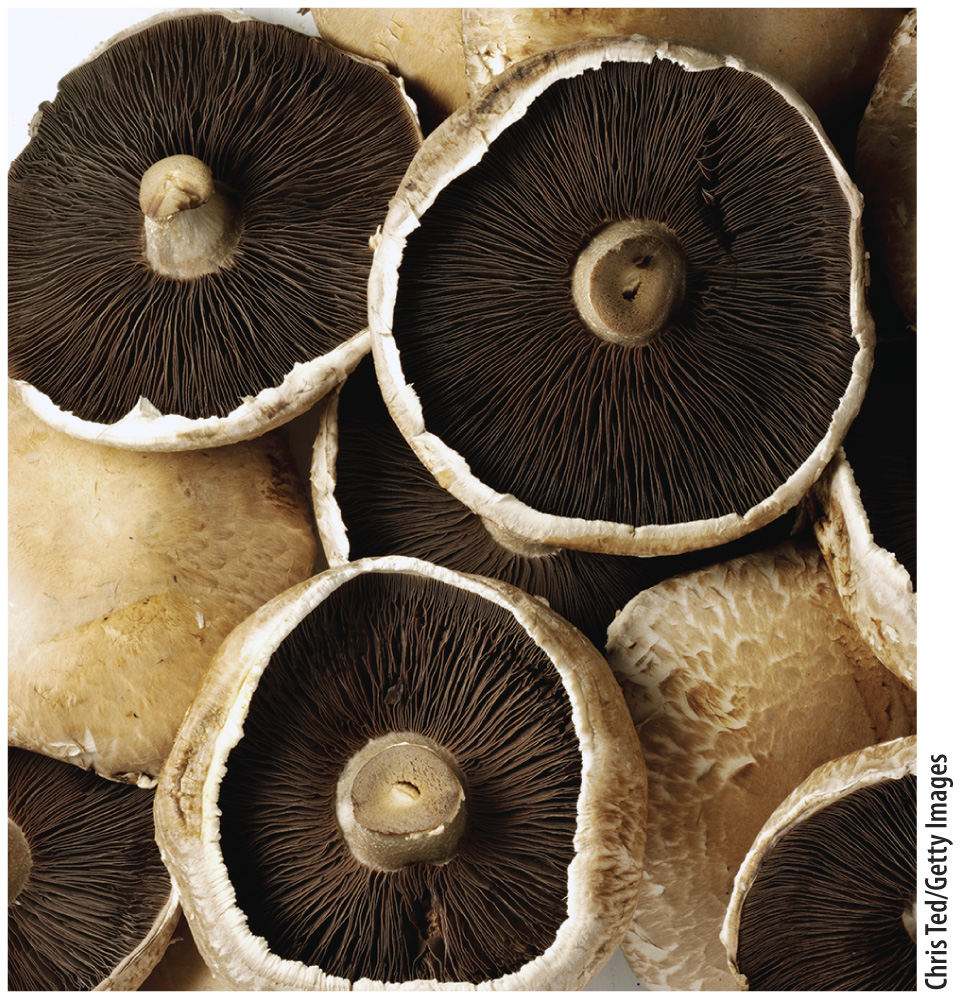Chapter 34 Introduction
715
CHAPTER 34
Fungi
Structure, Function, and Diversity

Core Concepts
- Fungi are heterotrophic eukaryotes that feed by absorption.
- Fungi reproduce both sexually and asexually, and disperse by spores.
- Other than animals, fungi are the most diverse group of eukaryotic organisms.
716
In tropical rain forests, vascular plants make up most of the biomass. Animals eat the plants, obtaining food for growth and reproduction, but they feed selectively: They consume leaves, fruits, and seeds, but largely avoid a much more abundant tissue—
On land, the organisms principally responsible for the decomposition of plant and animal tissues are fungi, one of the most abundant and diverse groups of eukaryotic organisms. Many of us have seen mushrooms and toadstools in a meadow or woodland, but most fungal biomass and most of the metabolic work that fungi do occurs within the soil, out of sight. Fungi play a critical role in cycling carbon because of their ability to locate and break down the complex molecules and bulky tissues in plant and animal bodies. Moreover, because they form intimate relationships with living plants and animals, fungi affect the growth and reproduction of many other organisms. For example, fungi associated with plant roots dramatically increase plant productivity by enhancing the uptake of mineral nutrients from the soil (Chapter 29). Other fungi are major agricultural pests (Chapter 32). Fungi enable us to turn wheat into bread, barley into beer, and milk into cheese, but still other fungi cause athlete’s foot, yeast infections, and, especially in patients with compromised immune systems, overwhelming infections that can lead to death.